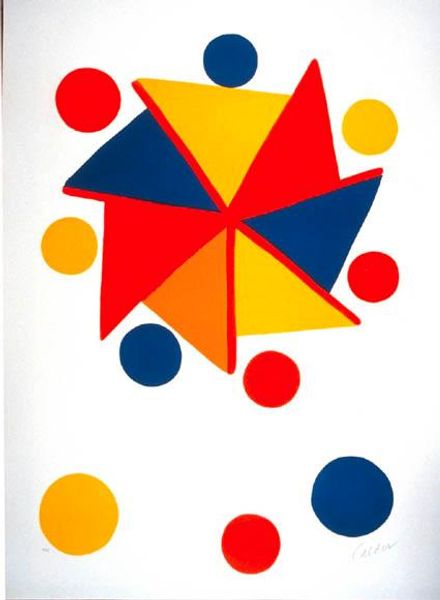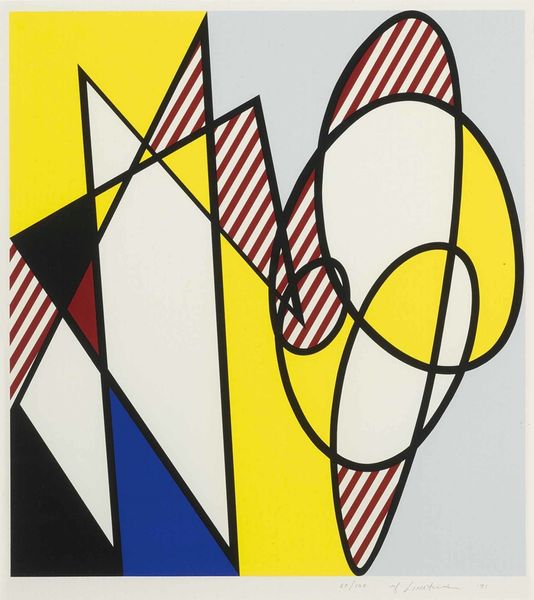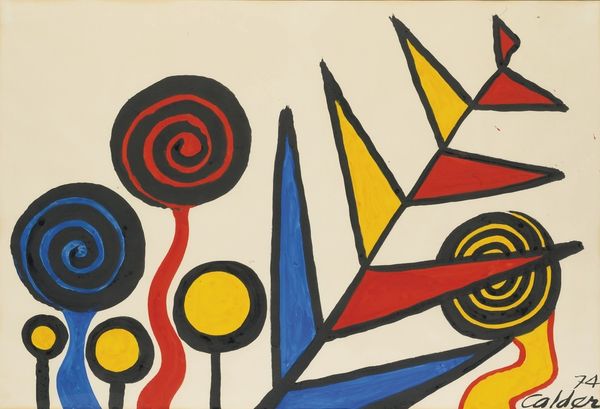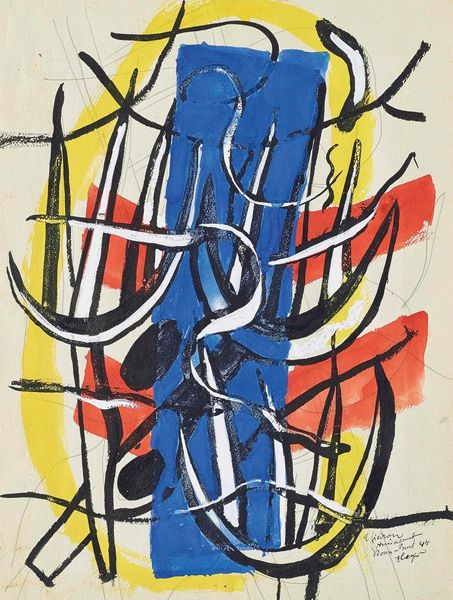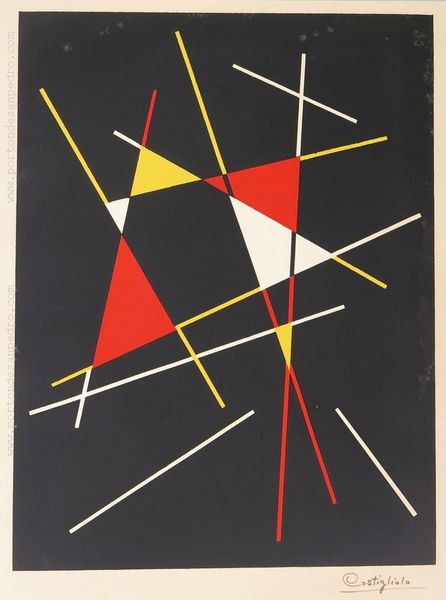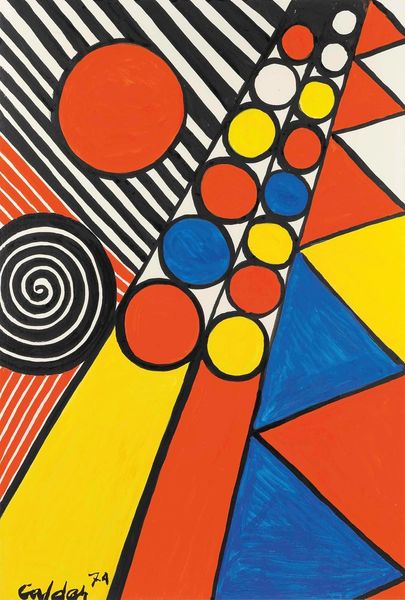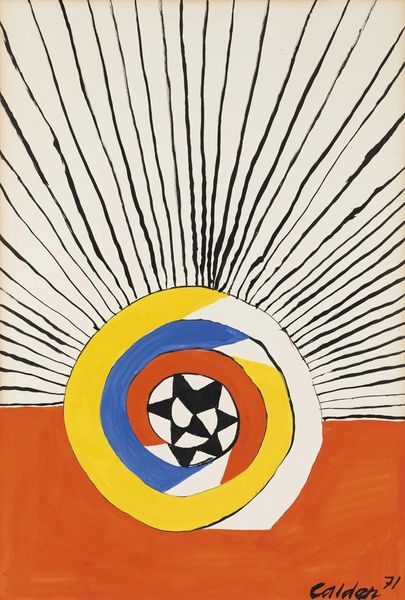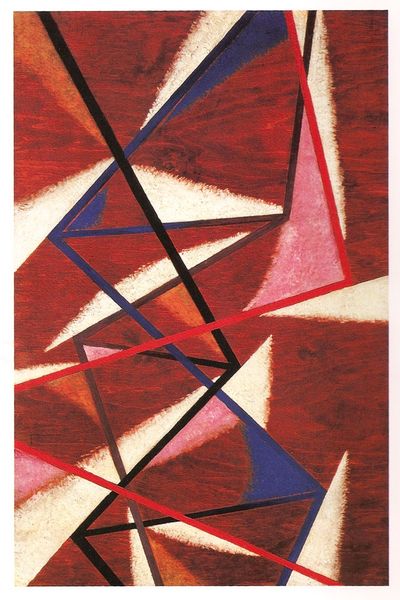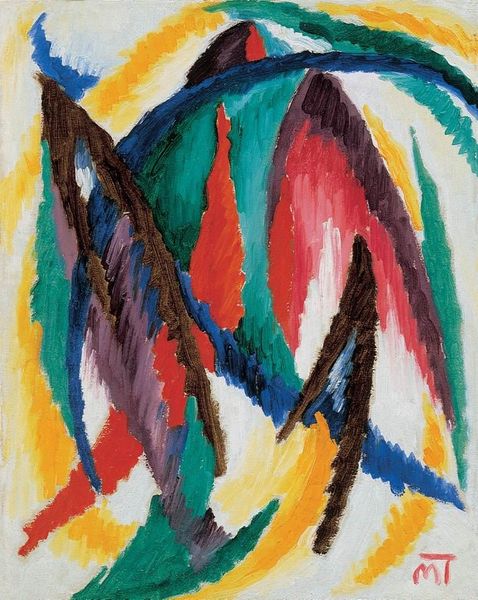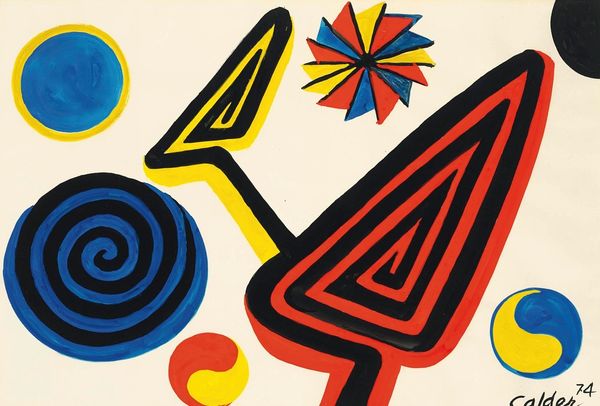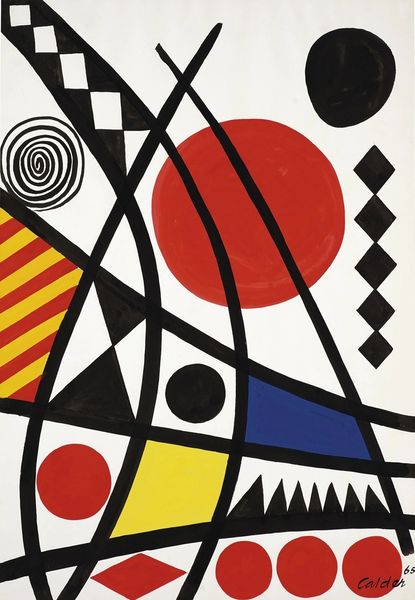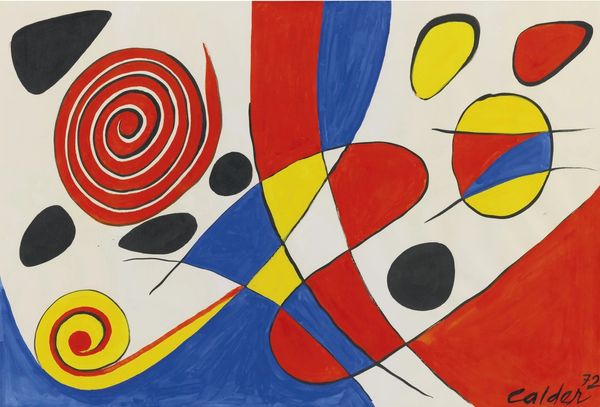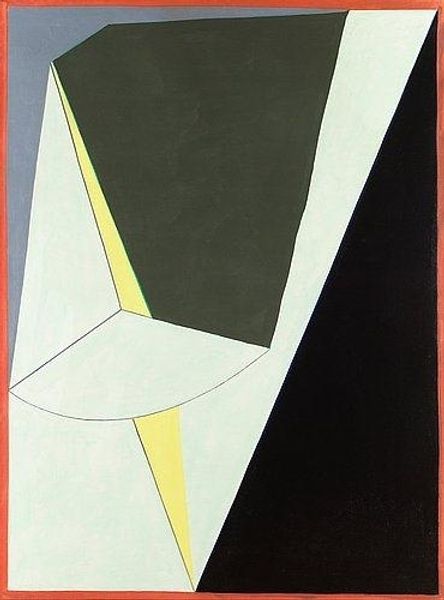
Copyright: Modern Artists: Artvee
Editor: Alexander Calder’s "Kakémono," from 1971, seems like a playful conversation between geometry and freedom. The acrylics on canvas pop with such simple joy! I'm curious, how do you interpret the work’s title in relation to its abstract design? Curator: "Kakémono"—a hanging scroll in Japanese— that's a mischievous wink from Calder, isn’t it? He's playfully hinting at traditional art forms, while simultaneously deconstructing them with his signature abstract language. For me, this painting is less about specific representation and more about evoking a sense of dynamic balance and joyful energy. Do you get a sense of movement when you look at it? Editor: Definitely! It almost feels like the shapes are dancing, especially with those radiating lines. But why these simple geometric forms? What are we meant to get from them? Curator: I see the basic shapes as Calder's visual vocabulary— circles, triangles, lines— all these elements were his go-to pieces. He arranges and composes these shapes with intention, yet seemingly carefree and impulsive in the brushwork, much like musical notes to create a harmonious symphony of color and form. It feels spontaneous but precise! Do you see any connection to Miro or Kandinsky here? Editor: Now that you mention it, yes, there's a shared visual language there. It's that rejection of pure representation in favour of… inner expression? Curator: Precisely. Calder wasn't trying to paint a picture; he was trying to evoke an experience, to tap into something primal within us. And by referencing the Kakemono he acknowledges and breaks the conventional rules of paintings and of art history in general. Editor: That makes total sense. It's more than just shapes; it's about feeling the energy, feeling the joy. I'm going to remember this painting differently from now on, it all came to life! Curator: Absolutely, it's like catching the sun in a kaleidoscope!
Comments
No comments
Be the first to comment and join the conversation on the ultimate creative platform.
